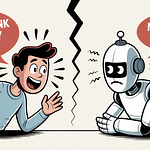Paper: Hierarchical Reinforcement Learning with the MAXQ Value Function Decomposition
Author: Thomas G. Dietterich
Published: 2000 (Journal of Artificial Intelligence Research)
Link: https://jair.org/index.php/jair/article/view/10266
🧠 What’s This Paper About?
Yesterday’s paper inspired a bonus read: “Hierarchical Reinforcement Learning with the MAXQ Value Function Decomposition.” The title is a mouthful, but the concepts are not so difficult to grasp once you break them down.
Imagine teaching a robot how to clean your house—not by giving it a thousand rules, but by helping it figure out how to clean the kitchen, then the sink, then the dishes… That’s the idea behind Hierarchical Reinforcement Learning (HRL).
In this foundational paper, Dietterich introduced MAXQ, a method for breaking complex tasks into manageable sub-tasks, each with its own value function. This hierarchical structure helps reinforcement learning agents learn more efficiently by reusing solutions to smaller problems.
🔍 Key Concepts
MAXQ Decomposition:
A formal method to break the overall value function (what’s the best long-term reward?) into a hierarchy of subtasks. Each subtask has its own goal and value function.
Subtasks and Policies:
Agents learn policies for subtasks (like “pick up object” or “navigate to location”) and combine them to solve more complex tasks (like “clean the room”).
Recursive Learning:
Lower-level policies are learned and reused across higher-level tasks, which improves generalization and makes the overall system more sample-efficient.
🧠 Why It Mattered Then (and Still Does)
This was one of the first robust mathematical frameworks for hierarchical learning in reinforcement learning. It showed how complex tasks could be decomposed in a way that was both computationally efficient and human-intuitive.
Today, MAXQ’s legacy lives on in:
Robotics (where decomposing movement is crucial)
Modern HRL frameworks like FeUdal Networks and Options Framework
Multi-agent and multi-stage AI systems, where tasks are broken into strategic subtasks
⚙️ Example from the Paper
In one experiment, the agent had to navigate a simulated taxi environment:
🏙️ Pick up a passenger → Drive to a destination → Drop off.
MAXQ broke this into steps:
Navigate to passenger
Pick up
Navigate to destination
Drop off
Each subtask had its own policy and was trained independently but coordinated within a hierarchy. The result: faster learning and more reuse.
🎧 Podcast Summary
The podcast is generated with Google Notebook, and the two chipper hosts are AI-generated. The sources used to develop today’s Notebook were the original paper and this article.
#ReinforcementLearning #HierarchicalAI #MAXQ #AIPlanning #MachineLearning #Robotics #AIResearch #TheWolfReadsAI #DeepLearningWithTheWolf















Share this post